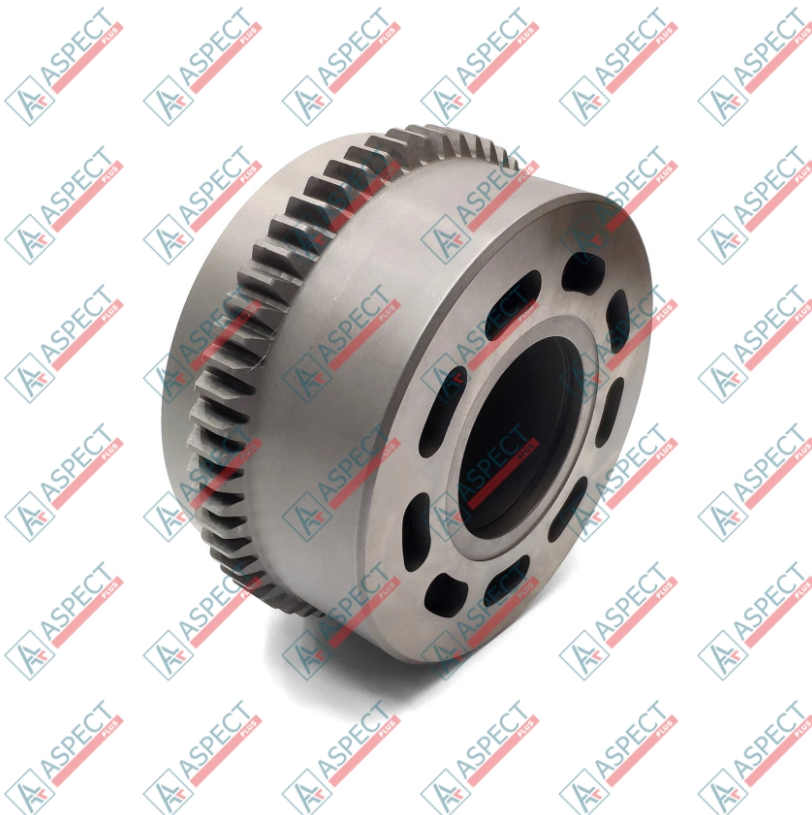Claas tractors are key players in modern agriculture, providing the necessary engine power and reliability for high-volume field operations. While most preventive maintenance focuses on the engine’s lubrication and fuel system, the often-overlooked exhaust system plays a disproportionately critical role in maintaining both engine performance and fuel efficiency. Any restriction or leak within the exhaust train—from the turbocharger to the tailpipe—can compromise the engine’s ability to breathe, resulting in power loss, high operating temperatures, and increased operational costs.
This article provides an expert analysis of the vital exhaust system maintenance of Claas tractors, detailing how the integrity of its components directly impacts engine efficiency and outlines essential upkeep strategies for optimal field performance.
The Exhaust System’s Critical Role in Engine Performance
The exhaust system is essential for two primary reasons: safety and engine efficiency. For turbocharged Claas engines, the exhaust path is intricately linked to the turbocharger, making its integrity non-negotiable.
1. The Principle of Turbocharger Efficiency
The turbocharger relies on the energy and flow of the hot exhaust gases to spin the turbine wheel, which, in turn, drives the compressor wheel to force compressed air back into the engine.
- Restriction: Any blockage in the exhaust path (e.g., a clogged Diesel Particulate Filter - DPF, a damaged muffler, or excessive carbon buildup) creates back pressure. This back pressure acts against the engine’s efforts to expel gases and slows the turbine wheel.
- Consequence: A restricted turbine cannot spin fast enough, leading to a loss of boost pressure. Lower boost pressure means less air enters the cylinders, resulting in incomplete combustion, a dramatic drop in engine power, and the need for the engine to consume more fuel to achieve the required output, severely compromising fuel efficiency.
2. Engine Thermal and Health Management
An efficient exhaust system helps the engine manage heat. If gases cannot escape quickly, exhaust gas temperatures (EGTs) rise. High EGTs can cause premature failure of seals, turbocharger bearings, and even the exhaust valves themselves, leading to costly engine repair.
Key Maintenance Areas and Signs of Failure
Effective Claas tractor maintenance requires systematic inspection of the entire exhaust path, especially in the dusty, high-vibration environment of farming.
1. Manifold and Gasket Integrity
- Vulnerability: The exhaust manifold is subjected to extreme heat cycles. Gaskets can fail, or manifold bolts can loosen.
- Signs of Failure: Listen for a loud, ticking or "chuffing" sound near the engine upon startup, indicating a manifold leak. A leak at this point before the turbocharger means the exhaust gas energy is lost, severely reducing the turbo’s efficiency.
- Maintenance Focus: Periodically check and tighten manifold bolts and promptly replace worn or damaged gaskets with quality spare parts.
2. Turbocharger and Upstream Components
- Vulnerability: The turbocharger is a high-precision component.
- Signs of Failure: A major sign of failure is excessive smoke (often blue/white, indicating oil consumption due to worn turbocharger seals and bearings). Loss of boost pressure, detected via diagnostics, indicates a drop in overall engine performance.
- Maintenance Focus: Ensure the oil supply lines to the turbocharger are clean and restrict-free. Turbocharger reliability hinges entirely on clean engine oil.
3. DPF, SCR, and Catalytic Converters (Modern Systems)
- Vulnerability: Modern Claas engines (Tier 4 / Stage V) use complex emission control systems (DPF/SCR). The DPF requires periodic regeneration to burn off accumulated soot.
- Signs of Failure: Engine derate (loss of power) and warning lights are typical. A failed regeneration cycle or a physically damaged DPF/Catalytic Converter creates severe back pressure, drastically compromising engine performance and fuel efficiency.
- Maintenance Focus: Strictly follow the Claas service schedule for regeneration procedures and periodic DPF cleaning/servicing.
4. Muffler, Piping, and Mounts
- Vulnerability: Mufflers and exhaust pipes can be damaged by physical impact in the field or through internal corrosion from condensation.
- Signs of Failure: Cracks, holes, or loose mounting brackets cause excessive noise, but more importantly, internal collapse of the muffler can cause unforeseen restriction, increasing back pressure.
- Maintenance Focus: Visually inspect for physical damage and ensure all mounting hardware and gaskets are intact to prevent leaks.
The Role of Quality Spare Parts in Fuel Efficiency
When performing exhaust system maintenance, the quality of spare parts is a direct determinant of the engine's efficiency.
- Seals and Gaskets: Using genuine Claas parts for gaskets and seals (especially between the manifold and turbocharger) is vital. A poor-quality gasket will leak, causing a loss of kinetic energy needed to drive the turbo, resulting in a loss of power and an increase in fuel consumption.
- Sensors: Components like Exhaust Gas Temperature (EGT) sensors and Differential Pressure Sensors are crucial for the ECU to manage DPF regeneration. If these sensors fail, regeneration cycles cannot occur correctly, leading to DPF clogging, high back pressure, and a drop in efficiency. Only quality parts guarantee the necessary precision and reliability.
- Turbocharger Components: In repair, replacement with a genuine turbocharger or a high-quality certified analogue is mandatory. Substandard components will fail quickly, drastically reducing engine performance and increasing the risk of metal debris contaminating the engine oil.
Conclusion
The exhaust system maintenance of Claas tractors is a critical aspect of preventive maintenance that directly supports the machine's profitability. Any restriction or failure in the exhaust path—from a simple gasket leak to a clogged DPF—immediately compromises the turbocharger’s efficiency, leading to engine power loss and a significant increase in fuel consumption. By prioritizing systematic inspections and making the strategic choice to use quality spare parts, particularly for high-heat and high-pressure zones, owners can ensure the maximum reliability and sustained performance of their Claas engines during the demanding agricultural season.
For expert advice on Claas service schedule, professional diagnostics, and a reliable source for genuine Claas parts and exhaust system components, contact the specialists at Aspect Plus.

